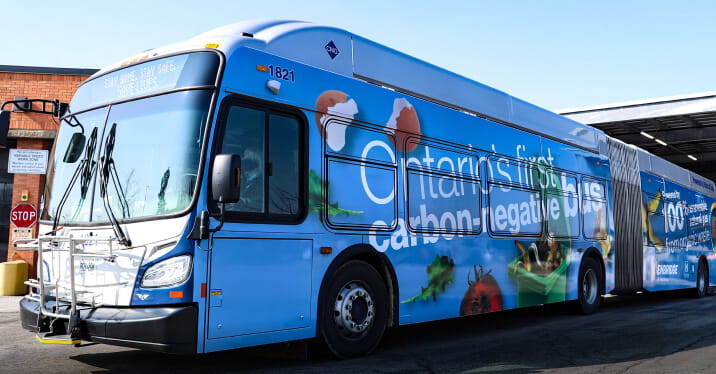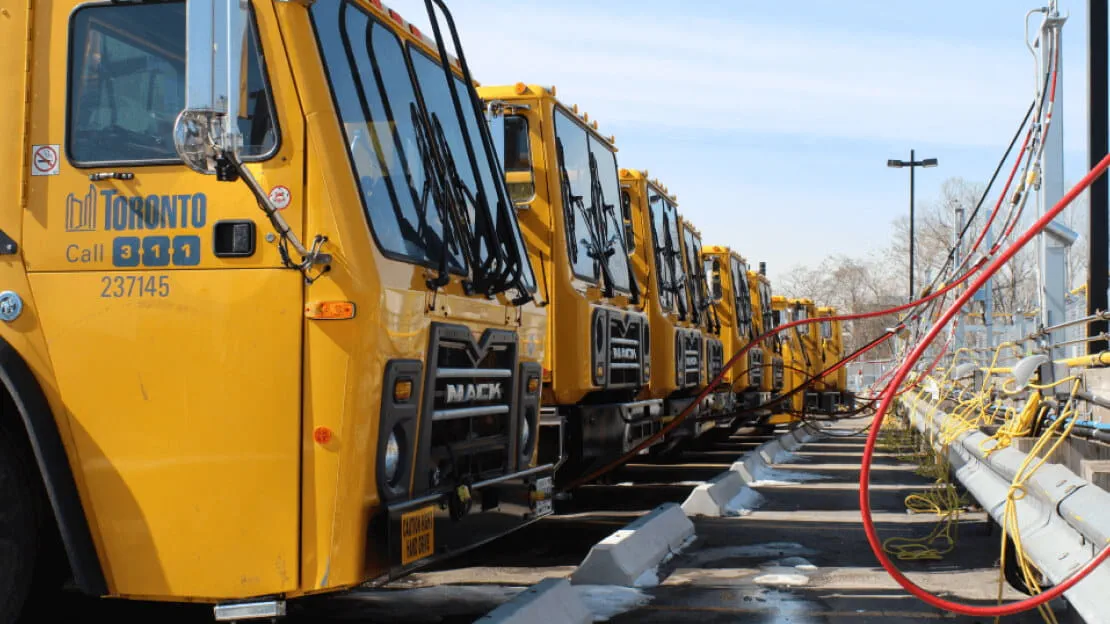Learn how to produce RNG
Utilize existing landfill gas and organic waste and distribute RNG using infrastructure that’s already in place.
In order to serve you better, please select your Enbridge Gas location services.
We noticed you are visiting from Utah, would you like to visit our Utah site?
Climate change is intensifying and the demand for effective solutions is at an all-time high. Increasing electrification is often cited as the primary pathway to achieving long-term climate goals, particularly with transit, but there are other economical, practical solutions that are market ready today. Renewable natural gas (RNG) offers an immediate path to net zero.

Did you know that methane is about 25 times more harmful than CO2? Produced from organic waste, such as manure or food scraps, RNG diverts methane that would otherwise be released into the atmosphere. Switching to compressed RNG is a proven way to reduce emissions.
City of Hamilton: Hamilton Street Railway
Hamilton, Ontario residents are enjoying a cleaner commute on a bus powered by RNG. As RNG is produced from organic waste, the entire process, from diverting methane to displacing diesel emissions, took its total net emissions to below zero.

City of Toronto: Dufferin Solid Waste Management Facility
The facility processes 55,000 tonnes of organic waste generated from the city’s Green Bin program. The resulting RNG is added to the existing natural gas system and used by the city, including to fuel its waste collection fleet.
An RNG-fuelled vehicle utilizes methane from organic waste which would otherwise be released into the atmosphere. Here’s how it compares to an electric vehicle.
Utilize existing landfill gas and organic waste and distribute RNG using infrastructure that’s already in place.
There’s no upfront cost—transition fleets with expert help and capital support from Enbridge Gas. RNG is suitable for fleets including buses, snow plows, refuse trucks, delivery vehicles, public works trucks, emergency vehicles and school buses.
We’re here to help switch to RNG, with capital support and expert help, resulting in no upfront costs for your municipality.